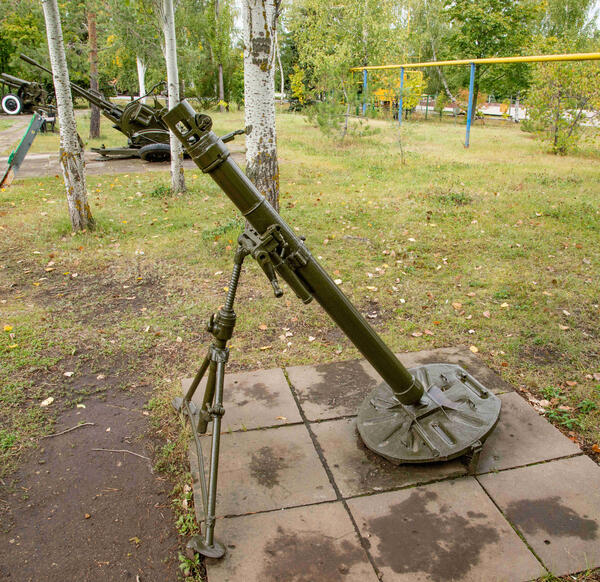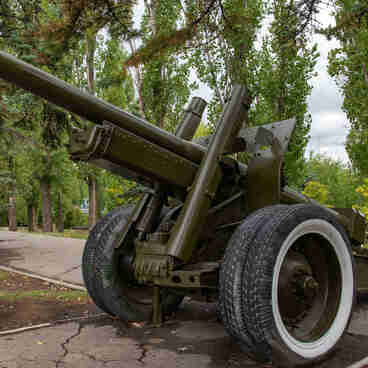The 82mm battalion mortar M1937 was developed by the team of the Special Design Bureau (SKB-4) at the Leningrad Artillery Plant No. 7. The Soviet designer Boris Ivanovich Shavyrin headed the project.
This mortar entered service in 1939. The smoothbore muzzle-loading gun had no counter-recoil mechanisms. The BM-37 mortar had a “quasitriangle design” scheme. In other words, the triangle was formed only from the side.
The 82mm mortar M1937 had a rigid scheme. The mortar became the model for all subsequent Soviet battalion mortars. The gun consisted of a barrel, a bipod, a base plate and sighting devices.
To produce a shot, the projectile was lowered fin-first into the muzzle of the barrel. Under its own weight, it slid down the bore and its primer-igniter of the ignition cartridge (the primary charge) struck the firing pin, which was screwed into the bottom of the breech.
The ignition cartridge detonated and ignited the propellant increments, and under the pressure of the expanding gases, the projectile flew out of the barrel. The 82mm battalion mortar BM-37 was designed to suppress enemy fire and inflict casualties. It was also used to destroy wire fences, which were located behind defensive posts and were inaccessible to grazing fire of rifle and artillery divisions.
The BM-37s were a powerful means of fire support for rifle battalions. They made it possible to accomplish combat missions at a range of up to 3000 meters. Their light weight, the option to dismantle the mortar for transporting by packs, and a high rate of fire were key for greater mobility, and rapid suppression and destruction of targets.
The effective burst radius for lying targets was about 18 meters, for standing ones — up to 30 meters. The ammunition also included smoke rounds. During combat missions, captured German 81mm mortar rounds were often used for the BM-37s. Due to the small difference in caliber, the fire accuracy slightly decreased, but remained quite acceptable. In the post-war years, such mortars were exported in large quantities and sold to many countries worldwide.
This mortar entered service in 1939. The smoothbore muzzle-loading gun had no counter-recoil mechanisms. The BM-37 mortar had a “quasitriangle design” scheme. In other words, the triangle was formed only from the side.
The 82mm mortar M1937 had a rigid scheme. The mortar became the model for all subsequent Soviet battalion mortars. The gun consisted of a barrel, a bipod, a base plate and sighting devices.
To produce a shot, the projectile was lowered fin-first into the muzzle of the barrel. Under its own weight, it slid down the bore and its primer-igniter of the ignition cartridge (the primary charge) struck the firing pin, which was screwed into the bottom of the breech.
The ignition cartridge detonated and ignited the propellant increments, and under the pressure of the expanding gases, the projectile flew out of the barrel. The 82mm battalion mortar BM-37 was designed to suppress enemy fire and inflict casualties. It was also used to destroy wire fences, which were located behind defensive posts and were inaccessible to grazing fire of rifle and artillery divisions.
The BM-37s were a powerful means of fire support for rifle battalions. They made it possible to accomplish combat missions at a range of up to 3000 meters. Their light weight, the option to dismantle the mortar for transporting by packs, and a high rate of fire were key for greater mobility, and rapid suppression and destruction of targets.
The effective burst radius for lying targets was about 18 meters, for standing ones — up to 30 meters. The ammunition also included smoke rounds. During combat missions, captured German 81mm mortar rounds were often used for the BM-37s. Due to the small difference in caliber, the fire accuracy slightly decreased, but remained quite acceptable. In the post-war years, such mortars were exported in large quantities and sold to many countries worldwide.



